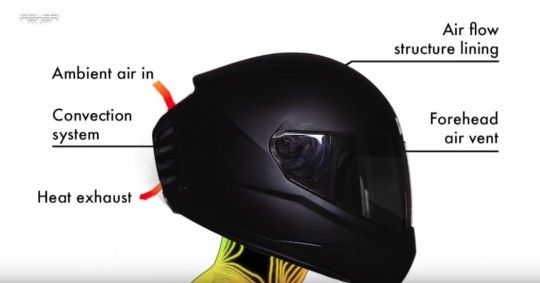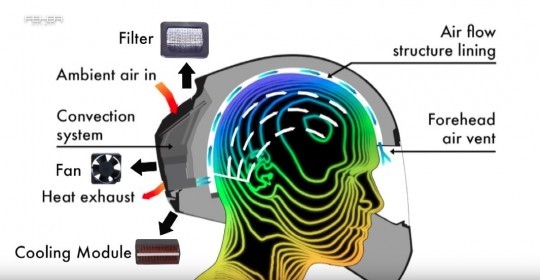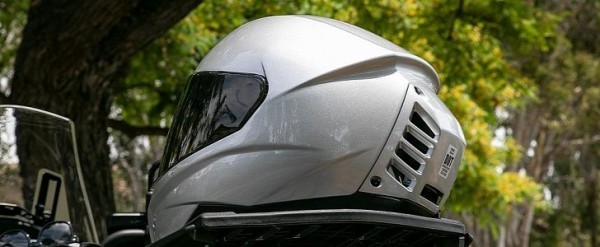The motorcycle helmets have been for ages mostly a functional piece of equipment. It has been designed with the primary goal of protecting a rider’s head in case of an impact. It was never created, in its early years, as a comfortable piece of equipment.
The motorcycle helmet is about as old as motorcycles themselves, being introduced for the first time in 1914 at the Isle of Man TT races. There are currently five basic types of helmets for motorcycles, depending on how they are meant to be used or on the way they have been designed: full-face, off-road, flip-up, open face and half helmet.
As the years passed, the need of making motor helmets more comfortable led to the inclusion of an incredibly high number of technologies into them. Despite all the efforts put into this process, adding a suitable, easy to use air conditioning system to helmets has proven to be particularly challenging.
There are currently on the market various types of air conditioners that can be fitted to an existing helmets. The most recent addition to the range, the Feher ACH-1, went on sale this August only in the United States for $599.WHAT IS IT

It comes in five different colors, all weighing 1,450 grams, in line with other motorcycle helmets, but it lacks any external venting holes. This is required to ensure proper circulation of the cooled air.
Feher claims the technology used in the helmet is the same one used by some car manufacturers for cooling the seats of their vehicles. The system combines thermoelectric technology with Feher’s patented Tubular Spacer Fabric to distribute filtered and cooled air across the top of the rider’s head.
The helmet is made of a synthetic fiber-reinforced multi-layered fiberglass shell and is equipped with anti-scratch and anti-fog coated face shield.HOW IT WORKS

As the motorcycle and its rider move, air is drawn into the helmet and circulated through the cooling module. Residual heat is evacuated through an exhaust, while the cooled air is sent through the Tubular Spacer Fabric, over the top of the rider’s head.
As per the specs released by the manufacturer, the helmet will create a cooler environment around the wearer’s head that is 10 to 15 degrees Fahrenheit cooler than the outside air temperature.
When the air conditioning is not activated, the flow of air to the interior of the helmet is ensured via the fan fitted on the piece of equipment. Keep in mind, if both the fan and the air conditioning are off, there is no outside air circulating through the helmet, hence Feher recommends that one of the two be activated at all times.
To be able to function, the Feher system needs power. It can either get it from the battery on the motorcycle, or from a separate battery pack that eliminates the need of plugging a cord into the motorcycle.
The motorcycle battery option comes with the necessary harness to connect to the battery and a quick disconnect cord with a switch to turn the AC unit on or off.
For the cordless option, riders will have to purchase the 12v battery separately by third party suppliers. Feher’s specs claim a 3000mAh battery should power the helmet for around 2 hours.









